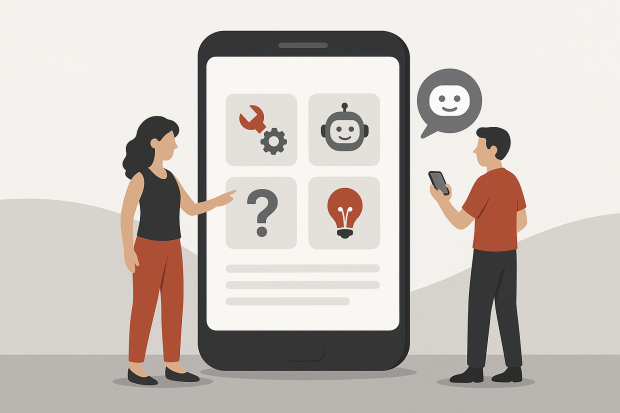Helping people help themselves: from manual to self-service portal
More and more companies are replacing static manuals with self-service solutions, which benefits both companies and customers. These solutions empower users to solve problems independently, whether they are related to purchasing, operating, or troubleshooting a product . The key is providing contextual, modular, and action-oriented information.
There are two major drivers behind this development. The first is the current shortage of skilled workers, which affects service and support departments as well. The second driver is the loss of know-how when experienced employees retire. Additionally, younger people prefer to find information online and independently rather than contacting support.
From document to self-help
Traditional documentation is increasingly being supplemented by compact, easy-to-consume information modules that are visually appealing and based on self-learning principles. These modules are made available through digital channels, such as customer portals or chatbots.
This shift naturally requires content revision. However, if documentation is created using a topic-based approach that focuses on tasks, concrete use cases, or error situations from the start, then it can be transformed into a self-service solution with minimal effort.
Automation and AI-supported content processing further reduce effort further and increase value.
Context instead of training
This change affects when and how content is presented and delivered but also where it is made available. In addition to classic online portals, contextual information modules are provided directly within applications. For example, these modules can serve as online help or as content for digital adoption tools used in software onboarding. This replaces traditional tool training, which has its limitations because no one covers ongoing work during training sessions.
The solution is to deliver contextual information directly in the workplace. This allows employees to solve problems as they arise without long downtimes.
Best practice: self-service and knowledge portals
As a digital self-service provider, we facilitate the transition from analysis to implementation. Typical steps include:
- 360-degree analysis of existing content, processes, and systems – from creation to delivery
- Customer-journey modeling to identify when and where users need information and in what form
- Metadata and taxonomy design to make content findable, filterable, and personalized in portals, apps, or embedded help
- Proofs of concept to test technical feasibility and user acceptance on a small scale
- Content engineering to prepare and modularize existing content for self-service formats with the support of automation and AI
- Technology selection and integration tailored to the company environment, from knowledge portals and chatbots to content delivery platforms
Use cases of self-service solutions
Our projects with proALPHA and GS1 Germany demonstrate how companies can transform their content to create smarter self-service experiences.
proALPHA aimed to improve how customers and staff access and use technical documentation. After the content delivery platform Zoomin was introduced for electronic publishing, we supported the project by designing a new information architecture and providing targeted content engineering. Learn more
For GS1 Germany, we helped transform a standard for digital business processes from traditional documents into structured, modular content. The result is smart content that is maintained in a semantic CCMS and delivered through a content delivery portal. Learn more
Conclusion
Self-service solutions are more than just a new documentation format. They represent a strategic paradigm shift from "We deliver information" to "We empower users."
Organizations that adopt this approach invest in efficiency, user satisfaction, and future readiness, creating real added value for everyone involved.
Interested in transforming your information processes with self-service content? Get in touch!

